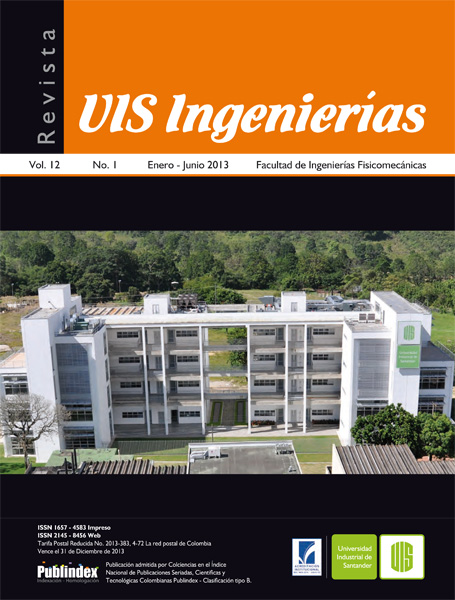Publicado 2013-05-11
Palabras clave
- IP security,
- DMVPN,
- mGRE,
- ESP,
- AH
- 3DES,
- SHA-1 ...Más
Cómo citar
Resumen
Este artículo presenta la herramienta “IPsec Tools UV”, desarrollada para entender e interactuar de una manera didáctica con las transformaciones que realiza IPsec cuando usa los algoritmos MD5, SHA-1 y 3DES durante la verifcación de integridad y cifrado de un datagrama IPv4. Como ejemplo se presenta la implementación de una red corporativa usando Redes Privadas Virtuales Dinámicas Multipunto, las cuales se basan en el establecimiento de túneles dinámicos protegidos por IPsec. La herramienta fue desarrollada en Java y con el apoyo de otro programa desarrollado fue posible validar el código de los algoritmos MD5 y SHA-1 con 14 vectores de prueba especifcados en la RFC 2202. Además, para mostrar una aplicación de IPsec, se hizo el diseño, confguración, emulación y validación de tres redes privadas conectadas a través de la Internet pública utilizando el software de emulación GNS3.
Descargas
Referencias
C. McDonald, P. Hawkes, and J. Pieprzyk, “Differential Path for SHA-1 with complexity 252”. (2009). Available: http://eprint.iacr.org/2009/259[visited June 2011].
J. Callas, L. Donnerhacke, H. Finney, D. Shaw, and R. Thayer, “OpenPGP Message Format”, In IETF (The Internet Engineering Task Force) Request for Comments RFC 4880. Available: https://tools.ietf.org/html/rfc4880 [visited August 2011].
L. Chappell, “Wireshark Network Analysis: The Official Wireshark Certified Network Analyst Study Guide”, Laura Chappell University, San Jose, CA 95129 USA, 2010, pp. 341-342.
Advanced Network Technologies Division, “NIST IKE (v1/v2) / IPsec Simulation Tool” Available: http://www.antd.nist.gov/niist/ [visited April 2011].
S. Kent, K. Seo, “Security Architecture for the Internet Protocol”, In IETF (The Internet Engineering Task Force) Request for Comments RFC 4301. Available: http://tools.ietf.org/html/rfc4301 [visited December 2010].
D.Farinacci, T. Li, S. Hanks, D. Meyer, P. Traina, and R. Glenn, “Generic Routing Encapsulation”, In IETF (The Internet Engineering Task Force) Request for Comments RFC 2784. Available: http://tools.ietf.org/html/rfc2784.html [visited January 2011].
G. Dommety, “Key and Sequence Number Extensions to GRE”, In IETF (The Internet Engineering Task Force) Request for Comments RFC 2890. Available: http://tools.ietf.org/html/rfc2890 [visited February 2011].
J. Luciani, D. Katz, D. Piscitello, B. Cole, and N. Doraswamy, “NBMA Next Hop Resolution Protocol (NHRP)”, In IETF (The Internet Engineering Task Force) Request for Comments RFC 2332. Available: http://tools.ietf.org/html/rfc2332 [visited June 2011].
J. Grossmann, X. Alt, “Graphical Network Simulator (GNS3 0.8.2)”. Available: http://www.gns3.net/download/ [visited August 2011]
Cisco Systems, Inc. “Configuring Dynamic Multipoint VPN (DMVPN) using GRE over IPsec between Multiple Routers”. Available: http://www.cisco.com/en/US/tech/tk583/tk372/technologies_configuration_example09186a008014bcd7.shtml[visited January 2012].
P. Cheng and R. Glenn, “Test Cases for HMAC-MD5 and HMAC-SHA-1”, In IETF (The Internet Engineering Task Force) Request for Comments RFC 2202. Available: http://xml2rfc.tools.ietf.org/html/rfc2202 [visited February 2011].
B. Hirschler, A. Treytl, and W. Neustadt, “Internet Protocol Security and Power Line Communication”, 16th IEEE International Symposium on Power Line Communications and Its Applications (ISPLC), date: 27-30 March 2012. Piscataway, N.J.: IEEE, 2012.
S. Kent and K. Seo, “Security Architecture for the Internet Protocol”, In IETF (The Internet Engineering Task Force) Request for Comments 4103. Avalilable: http://tools.ietf.org/html/rfc4301 [visited june 2012]

